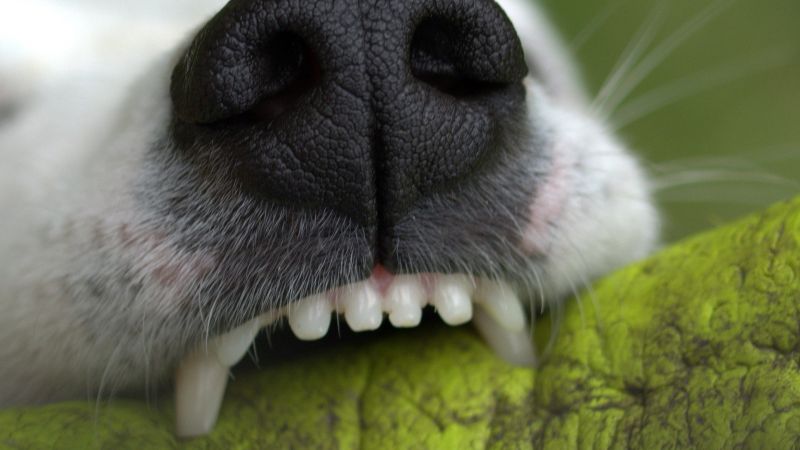Making direct eye contact, forcefully reaching into their personal space and, worse still, trying to put your hand or face directly in theirs are all quite dominant and aggressive behaviours in the dog world. Most do not appreciate this invasion of their space and it is exceedingly easy for them to bite you if they want to send a message.
The simplest and safest way to approach a new, unknown dog, including those owned by family, friends and neighbours, is simply not to. “But wait!”, I hear you cry, “I really want to pet that gorgeous-looking dog! I want to stroke his fur and give him a cuddle!” Sure, and if I saw Scarlett Johansson at the bar, I’d think the same thing – but it doesn’t mean I get to.
Instead, we work on the 80/20 rule: approach 80% of the way and let the other party approach the other 20% if they want to. If they don’t approach, that’s their first way of telling you “please leave me alone”, at which point you need to understand that if you continue to proceed, you’re doing so against their will.
It also really doesn’t matter how cute the dog is. Even the sweetest, most adorable dogs can do some pretty serious damage to your (or your child’s) hand. The appearance of a dog as “cute” is absolutely not a reliable predictor of whether or not they may bite.
Most people have real difficulty accepting that dogs generally do not like being hugged or, more specifically, entrapped. Only primates (e.g. monkeys, gorillas, humans, etc.) enjoy and practice hugging in the animal kingdom. This is the number one reason small children are bitten by dogs. Many dog bites occur when someone is hovering over a dog, oblivious to the signals they’re sending. It’s not always obvious to the casual observer why the dog bit, but in many cases it’s because of the hover before the hug. A lot of dog fights also start with one dog attempting to hover over the other.
Don’t let small children play with dogs without proper adult supervision. If the children are very young, the adult needs to be physically next to the child when a dog is present to prevent dog bites. Young kids may inadvertently poke an eye or pull a whisker, for example, which may result in a growl, a show of teeth, an air snap or a soft hold before an actual bite – these are all signs to say “back away”.
In the same vein, don’t bother a resting or sleeping dog. Dogs are animals and can be primal in their instincts. Startling a resting or sleeping dog can bring out those instincts which frequently include biting the first thing they see.
I also have no idea why some dog owners feel the need to put their hands in their dog’s food bowl while they are eating. Ironically, this can ultimately lead to resource guarding, the very thing you think you’re training against. Just let them eat, or chew their bone, and outside of this, teach them some redirection and focus work.
Never, ever reach in the middle of two dogs fighting in order to separate them. This is probably the best way I know to get a bad dog bite. What you will receive is a redirected bite from a dog that is not necessarily meaning to bite you, but is just biting the thing that is getting in the way of the altercation with the other dog. Even if it’s your own dog, their reactions are way quicker than yours.
Good dog bite prevention starts with never assuming an unfamiliar dog is 100% comfortable with you, even if the dog’s owner says they are. Your own personal dog is liable to be far more tolerant of various (annoying) behaviours that you subject them to (e.g. “My Fido loves being cuddled by me.”). Just because he tolerates it from you (or even loves it), doesn’t necessarily mean he’ll willingly accept it from anyone else.
If you would like some more information on canine training, or behavioural issues, contact us on 091 654 1960, email info@k9pointacademy.com or check our website www.k9pointacademy.com
CPA is the only K9 organisation in Thailand accredited with the Certification Council for Professional Dog Trainers (CCPDT), and as an American Kennel Club (AKC) Evaluator.








